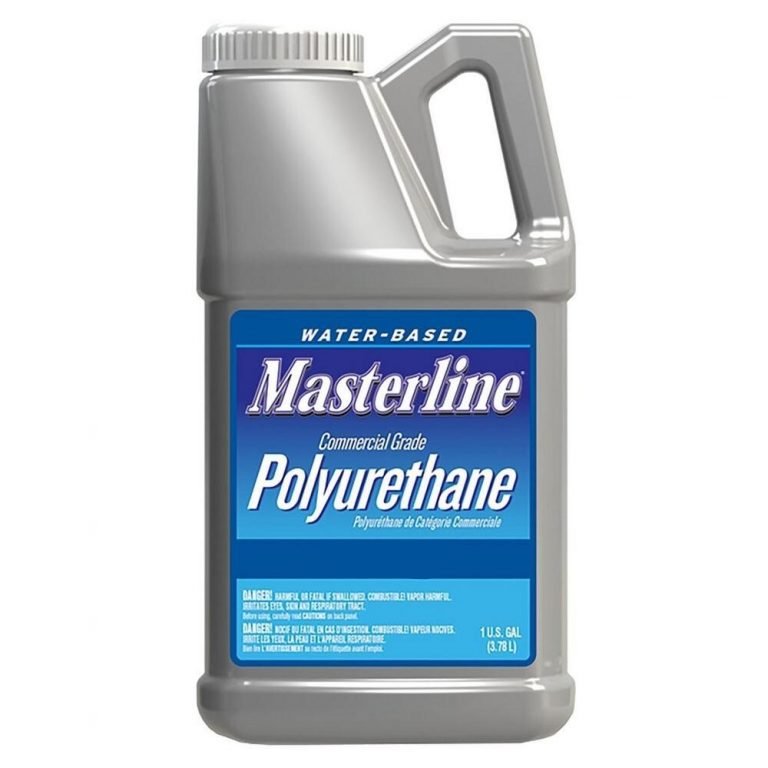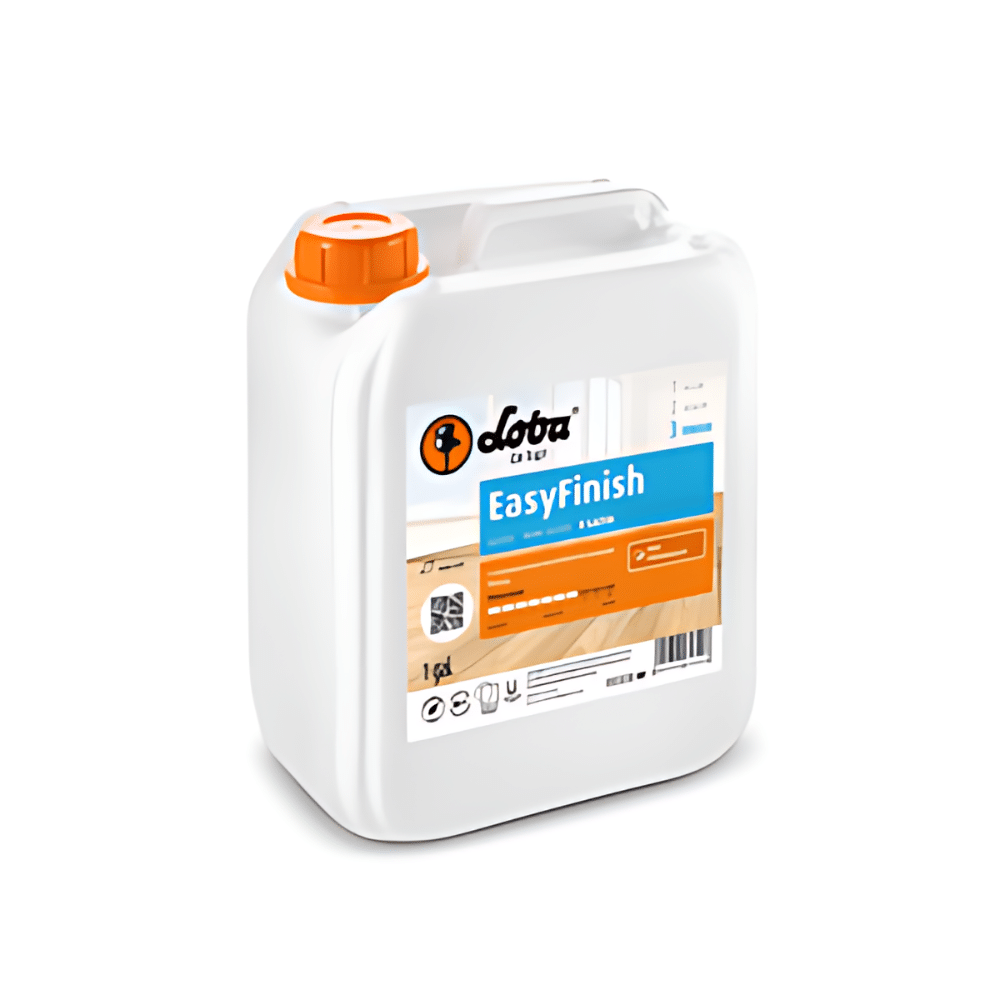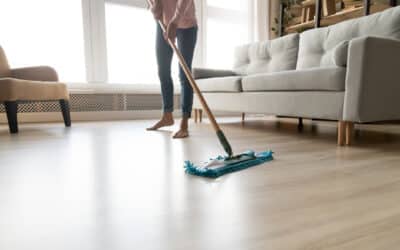Your hardwood floor is the main feature of your home, and finish is the final touch. Polyurethane is the water-resistant layer your contractor applies to protect the wood and give it a beautiful sheen. Water-based polyurethane finish is the best polyurethane for hardwood floors, and many consider it the future of polyurethanes. High-level water-based polyurethane is as durable as oil, easier to apply, and better for you, your family, your pets, and the environment.
In this post, you’ll find out why the best polyurethane for hardwood floors is water-based and how it compares to oil-based polyurethane. By the end, you’ll know the most important factors to consider when it comes to wood floor finishes and the brands we recommend.
Read on or watch the video summary.
Oil Vs Water-Based Polyurethane: Past, Present, and Future
In the past, oil-based polyurethane was the standard finish for protecting and bringing out the beauty of the wood. As water-based alternatives were introduced, oil proved to be superior in almost every way. In the 1990’s, water-based finishes were especially terrible. They peeled, felt rough, and had a dull grey look. They weren’t much better in the early 2000’s, either.
Today, you can buy a water-based finish that’s better than oil-based polyurethane. What’s the difference between then and now? Advancements in waterborne technology. Water-based formulas have progressed to be more chemically efficient. Not only are they eco-friendly, but they’re also highly effective.
The finish of the future?
Water-based polyurethane has taken the lead over oil-based finish. One main reason is due to the health risks of products with high VOCs (volatile organic compounds). OSHA and the EPA list and label oil-based products with high VOCs as potential health hazards. Since 2007, states such as California, Oregon, Colorado, Ohio, and Utah have enacted legislation that restricts or bans the use of oil-based polyurethanes. Many other states are doing the same thing. As time goes on, you can expect more VOC limitations and restrictions to come into effect. On a national and state level, the outlook favors less toxic, water-based products.
Low VOCs Improve the Health of Your Home
One major benefit of using low-VOC or 0-VOC products is improved air quality in your home. VOCs are one of the the main contributors to indoor air pollutants. When you breathe them in, they can cause headaches, dizziness, and nausea. And exposure, especially over time, may lead to the onset of diseases, such as cancer and permanent brain and neurological damage.
All oil-based polyurethanes are combustible, odorous solvents that emit toxic chemical fumes as they dry. Off-gassing of VOCs occurs until the finish is 100% cured, which can take up to 21 days. Anyone in the space will come in contact with these chemicals as they off-gas.

Compared to oil, water-based polyurethanes have lower VOC content. This means they’re much more pet, and family-friendly. Which one would you rather have in your home?
Applying Water-Based Finish is More Efficient
Water-based polyurethane is easier and faster to apply, but only if you’re skilled at floor finishing. The fast-drying time can create problems for inexperienced floor finishers.
If you know what you’re doing, finishing a floor with water-based poly is easier. You don’t need a respirator like you do with oil-based finish, and there’s less required for prep and clean-up.
The main obstacle for contractors is uncertainty about waterborne products from bad experiences with products from the past. The main challenge is getting used to a faster-drying formula. Those who make the switch successfully appreciate the benefits. They complete projects faster and get better results.

Skilled contractors using water-based finish can apply a new coat every couple of hours without abrading between every single layer. Oil requires a mechanical bond, so they must abrade in between each coat of finish or the layers won’t stick.
How many coats of water-based polyurethane do you need?
Today, one coat of sealer and 2-3 coats of a high-end water-based finish will give the floor long-lasting protection in less time. In as few as three days, the finish will be fully cured, offering maximum strength against spills, scuffs, scratches and other forms of wear. In the past, contractors needed to apply up to five coats of water-based polyurethane.
The Appearance of Water-Based Polyurethane
Today’s high-quality water-based finish gives you more choice in your floor’s final appearance. You can achieve a variety of looks on any species of wood. Traditionally, some species, such as walnut, required a coat of oil to achieve added depth and richness. Water was reserved for light-colored wood species, such as maple, ash, pine, and fir. Now, though, you have plenty of style options with water-based finish for a stunning final look.


Oil-based finish ambers over time
A single coat of oil polyurethane adds an amber hue to the floor. Many floors with an oil finish look amazing when the finish is cured. Each year, the floor’s oil coating will change along with the wood itself. And if the floor gets regular sunlight, you can expect the color to intensify. Within 5-7 years, your floor’s beautiful initial glow can become a noticeable and unattractive yellow.
Does water-based polyurethane turn yellow?
Water-based poly does not turn yellow. It has high clarity and goes on clear, preserving the wood’s natural aesthetic. If an amber color is important to you, you can achieve a similar effect using stain, sealer, or a finish with additives.
How Long Does Water-Based Polyurethane Last?
A quality UV-resistant water-based finish can be even more durable than oil. An experienced contractor can apply water-based finish that won’t require maintenance for 10 years. A major misconception is that oil-based polyurethane is more durable than water-based finish by default. This used to be true. Oil provides a standard level of durability, but the durability of water-based finish depends on the brand, product level, and application. The overall quality of a water-based finish varies and you can often tell by the price.
The quality varies by brand and product level or tier
Not all water-based finishes are created equal. Overall, it’s important to distinguish between the different levels of quality available. When you choose the best product and a reliable brand, you’re also going to get the best results.
Low-Tier Water-Based Polyurethanes Can Work Depending on Your Lifestyle and Needs
A lower level water-based polyurethane is a great option for couples, or small families with less active lifestyles, without large dogs running around outside, inside, and in between rooms. But don’t expect the same level of durability as a high-end single or two-component finish.
For example, if you use Masterline Water-Based Polyurethane, which has a starting point of $47.05/gallon, it won’t be as rigid and protective as a high-end Bona, Vermeister, or Woca product. But you can still use it to get the job done.
If you’re in the market for a comparable single-component finish, you may also be interested in Bona Domo.
Masterline Polyurethane
Masterline is a less expensive water-based polyurethane hardwood floor finish with coverage of 500-600 sq. ft/gal, and is fully cured in approximately 7 days, depending on application. It’s VOC content does not exceed 275 g/L, and it’s available in three sheens: satin, semi-gloss, and gloss.
The Best Water-Based Polyurethane Brands Form a Thin, Hard, and Durable Coating
The best 1 and 2-component water-based polyurethanes are priced accordingly. If you invest in the $100/gal price range, such as in the high-end single component, you will get a durable coating suitable for residential and low-traffic commercial floors.
If you’re looking for the best of the best, then the commercial-grade two-component Bona Traffic HD provides a nice build layer, fewer VOCs, and the highest level of protection.
The products below provide you with a layer that dries fast, protects the wood, and pairs with sealers for customized looks. These products are specially formulated to withstand spills and intense wear over time, minimize indoor air pollutants as they dry, and produce a stunning sheen.
Loba EasyFinish
Loba EasyFinish is a mid-upper level water-based polyurethane hardwood floor finish with coverage of 500-600 sq. ft/gal, and is fully cured in 5 days and VOC content of 232 g/L.
It’s one of the most DIY-friendly finishes on the market and comes available in three sheens: satin, semi-gloss, and gloss. For an upper level two-coat system, use Loba 2K Duo.
Bona Traffic HD
Bona Traffic HD is a high level water-based polyurethane with coverage of approximately 350-400 sq. ft/gal. It’s fully cured within 3 days and VOC content does not exceed 150 g/L. You can choose from three sheens: extra-matte, satin, and semi-gloss.
Recently, Bona released Bona Traffic Go. This product offers 2K protection with the hardener built in for an ultra-durable single component finish.
Summary
When it comes to the raw materials, look, feel, and protection of your floors, a quality water-based finish is the best polyurethane. Oil-based finish has high VOC content, requires more labor, and takes more time to cure, which means there’s more time for VOCs to off-gas.
More regulations that restrict VOCs in consumer products are rolling out nationally and state by state. As people begin realizing the effects of VOCs on their well-being and on the environment, they’re choosing the finish of the future. In the hands of skilled contractors, a high-quality water-based finish is the superior product.
Now that you know more about the best polyurethane for hardwood floors, read about the different kinds of sheens, choosing the perfect hardwood floor stain color, sanding, hardwood floor wax, or take a look at our hardwood floor buying guide.
Leave a comment below or ask us any questions!






